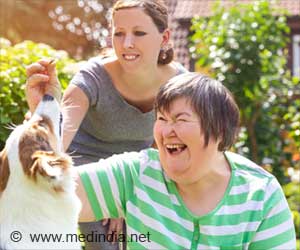Nearly a third of old age dementia can be prevented and physicians and policymakers alike should address modifiable risk factors and enforce policies that help prevent the decline of brain function.
Highlights:
- Nearly a third of late-onset dementia can be prevented, and health care and government officials should take urgent measures to reduce dementia risk and prevent the decline in brain function
- Dementia cases are rapidly increasing at a rate of 20 percent but there is no cure in sight for this crippling condition that severely limits the quality of life, not to mention the huge burden on the family members and nation's healthcare system
- Further research should focus on gaps in existing knowledge with regards to various types of dementia, duration of exposure to risk factors and data across various geographical areas to gain better insight and plan appropriate interventions
Dementia is a condition marked by progressive loss of brain cells and deterioration of higher brain functions such as memory, understanding, decision making, mood changes etc., that make a person increasingly dependent on others for daily activities and severely limits quality of life
Guest Editors Ruth Peters, PhD, and Kaarin Anstey, PhD, from the University of New South Wales and Neuroscience Research Sydney, Australia, said: "The IRNDP issue serves to highlight the substantial remaining evidence gaps and the next steps forward in this area of research. We have already achieved a lot, but now is the time to refine and develop our understanding to be able to build the next generation of dementia risk reduction interventions with translatable and applicable policies to protect human cognitive health."
Read More..
Modifiable Risk Factors of Late-onset Dementia
Up to 30 percent cases of late-onset dementia can be prevented by addressing the following modifiable risk factors including:- Smoking
- Diabetes
- Obesity
- Social isolation
- Blood vessel disease
- Sleep disorders
- Chronic lung disease
- Air pollution exposure
Addressing Gaps in Existing Research
Although rapid strides have been made in understanding about dementia and the factors involved, there are still some gaps that should be addressed in future research ventures including- Lack of evidence regarding exposure to risk factors during middle age
- Paucity of data on risk factors for vascular dementia
- Scarcity of data from low and middle-income nations
- Lack of data in specific geographical areas and population groups such as Australian Aborigines
- Determining concentration of certain risk factors to specific regions
Risk Factors Associated with Dementia in Three Portuguese Speaking Nations
Studies have shown that cultural practices may influence dementia risk in certain populations, although more research is necessary to gain better insight into these aspects. After adjusting for potentially confounding factors, studies have found that 24-40 percent of dementia cases in three Portuguese speaking nations namely Portugal, Brazil and Mozambique can be attributed to seven potentially modifiable risk factors such as- Smoking
- Diabetes
- Midlife hypertension
- Obesity
- Depression
- Low level of education
- Sedentary life and lack of physical activity
Currently, there is no cure for dementia and preventive measures are likely to play a bigger role in decreasing dementia cases worldwide.
The authors state that results of ongoing studies looking at specific interventions in reducing dementia risk will be hopefully available over the next three to five years and can help get a better understanding on ways to cope with the problem better.
In summary, many cases of late-onset dementia can be prevented by addressing specific risk factors and these could go a long way in controlling the alarming rise of dementia across the world through concerted global efforts and focused research and specific interventions in target populations.
Reference:
- New Insights: Dementia, Risk, Risk Reduction, and Translation into Practice - (https://www.iospress.nl/ios_news/new-insights-dementia-risk-risk-reduction-and-translation-into-practice/)
Source-Medindia













